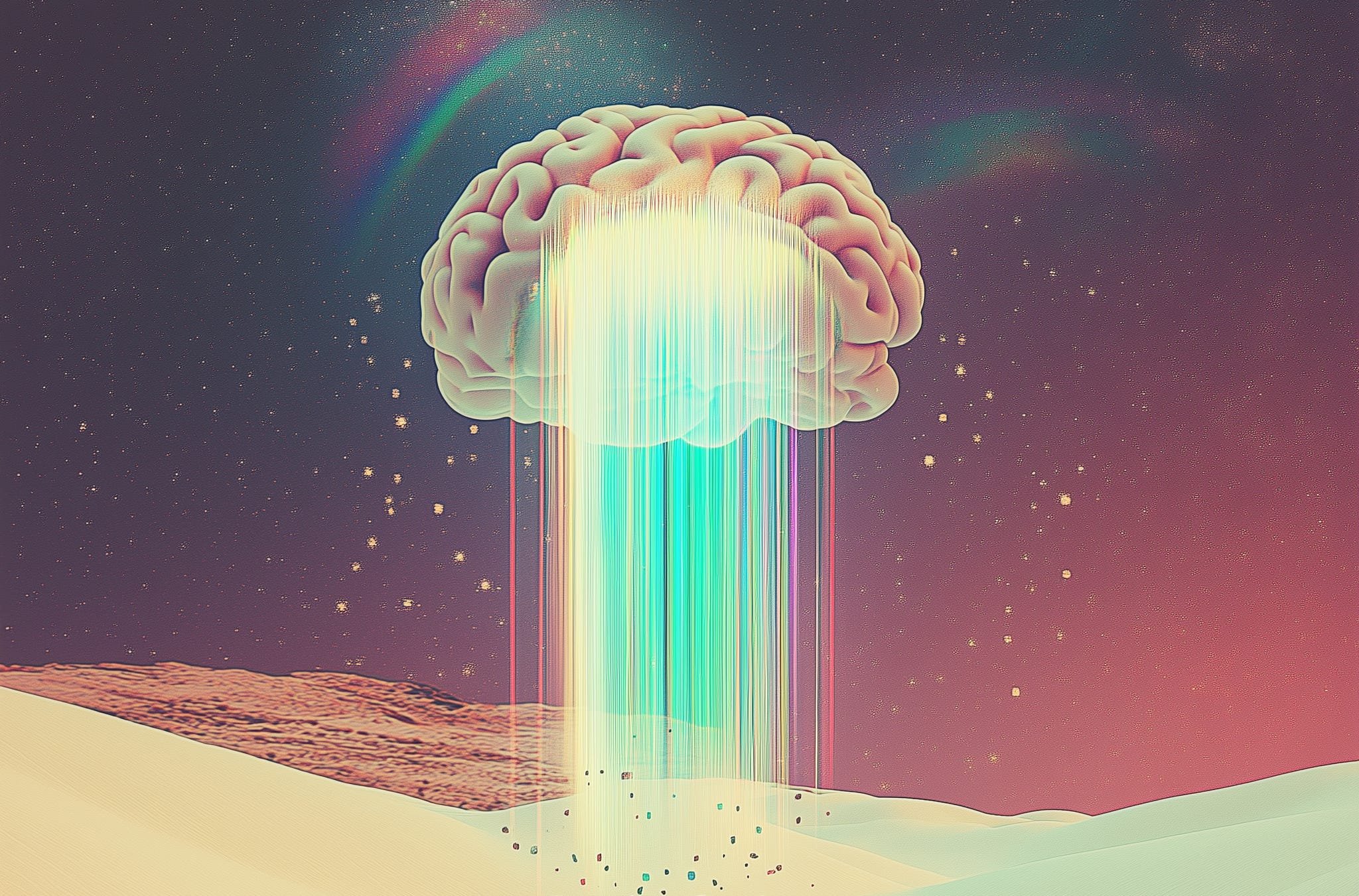Why Are We Afraid of the Subconscious?
From breathwork to belief systems, unpacking why inner work freaks us out
Not long ago, I posted something on social media about going to a Kundalini class and doing some breathwork. Just another day of trying to feel more grounded, connected, and present in my body. A few hours later, I got a message from my mom. She had seen the post and was genuinely worried. Her voice carried that urgent, maternal tone I know so well. The kind that says, “something is wrong and we need to talk right now.” She was afraid I might be opening myself up to dark spiritual forces, or worse, putting myself at risk of (demon) possession.
At first, I didn’t know whether to laugh or cry. I love my mom deeply, and I know her concern came from a place of love. She comes from a conservative Christian background, and I grew up with many of those beliefs shaping how I saw the world too. So I understand. In that framework, practices like breathwork or yoga can seem unfamiliar at best and spiritually dangerous at worst. But to me, these practices have been profoundly healing. Trying to explain that to her, to say I wasn’t calling in demons, I was just breathing intentionally to release stuck energy, was very interesting. The more we talked, the more I realized her fear wasn’t just about breathwork. It was reflecting something deeper, a fear that I think many people carry — the fear of the subconscious and what might happen if we actually go there.
So let’s talk about that.
The subconscious tends to be treated like some dark, mysterious vault we are better off leaving shut. And to be fair, it is where we store the things that were too overwhelming to process at the time. Old emotional wounds, limiting beliefs, and deep fears often end up there. It’s like the junk drawer of the psyche, full of memories and internalized messages that got shoved aside but never truly disappeared.
But here’s the problem: that drawer doesn’t stay closed. What’s in the subconscious doesn’t just sit there quietly. It seeps into how we think, feel, and behave. It influences our self-worth, our relationships, the patterns we repeat, and the choices we make — often without us realizing it. So while ignoring it might feel safer, avoiding it can keep us locked in cycles we don’t understand.
And when we let fear keep us from exploring the subconscious, we may be closing ourselves off from some of the most powerful tools for healing. Breathwork, meditation, EMDR, hypnosis — these practices aren’t about giving up control or rejecting faith. They’re about meeting the parts of ourselves we’ve avoided with gentleness and curiosity. They help us safely access the beliefs and emotional imprints that have been quietly shaping our lives. Healing often begins not with changing who we are, but with understanding what we’ve been carrying.
Take relationships, for example. If I have a subconscious belief that I don’t deserve real love, I might keep choosing partners who confirm that story. Even if I consciously want something better, the inner narrative can keep pulling me back to the familiar. Until I uncover that belief and shift it, the pattern is likely to continue.
Exploring the subconscious doesn’t mean we have to dig up everything at once or relive every painful moment. In fact, the most effective healing often happens gradually, in safe and supported environments. When we can meet our inner world with compassion instead of fear, we make space for real change.
I understand why people feel hesitant. Especially if you grew up in a culture or faith tradition where anything that altered your consciousness was seen as dangerous. It’s easy to assume that going inward might open a door to something dark. But from my experience, the only thing I’ve found in those practices is myself — usually the younger, hurt, or hidden parts of me that just wanted to be seen.
The subconscious isn’t the enemy. It’s a part of us that’s been trying to protect us, even if it hasn’t always done so in the healthiest ways. When we take the time to explore what’s been buried, we can begin to live more consciously, more freely, and more in alignment with who we really are.
Yes, it can be uncomfortable. But it can also be deeply beautiful. Because beneath the layers of fear and old programming is where we find our clarity, our creativity, our resilience, and our joy.
So if you’ve ever been curious but cautious about doing inner work, just know you’re not alone. And what’s waiting for you might not be something to fear at all — but rather a deeper understanding of yourself, and the freedom that comes with it.
And if your mom calls worried, just tell her you’re breathing deeply, staying grounded, and absolutely not joining a cult. That usually helps.
